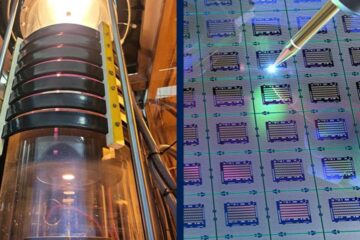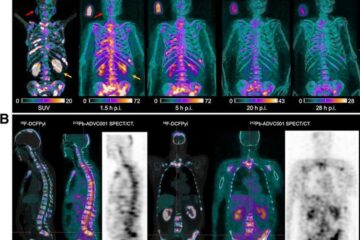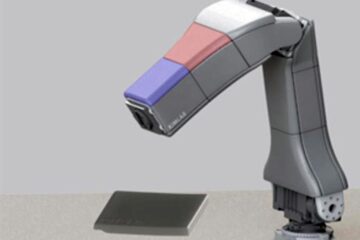Holy glycosylation! New 'bat signal' flags distressed cells in childhood genetic diseases

Just as Gotham City uses the Bat Signal to call for Batman's aid, a new tool developed by scientists from the Sanford-Burnham Medical Research Institute in La Jolla, California, should serve as the cellular equivalent for children with glycosylation disorders, sometimes called “CDG syndromes.”
In a new report appearing online in The FASEB Journal (http://www.fasebj.org), scientists describe how they used a green fluorescent protein to identify the presence of genes—known and unknown—associated with a wide variety of glycosylation-related diseases. By being able to identify exactly which genes are defective, researchers can develop treatments and therapies to correct the root causes of these diseases rather than merely treating the symptoms.
Glycosylation is an enzymatic process that coats proteins, lipids or other organic molecules with sugar molecules. It helps cells “stick” together, and proteins fold and work properly, among other things. When this process does not function correctly, it causes diseases involving intellectual disability, digestive problems, seizures and low blood sugar.
“We hope this glowing protein will help light the path for the discovery of new genes that cause genetic disorders in children,” said Hudson Freeze, Ph.D., a senior researcher involved in the work from the Genetic Disease Program at Sanford-Burnham Medical Research Institute in La Jolla, California. “It's not Harry Potter's magic wand, but we hope it will offer a way to test for new therapies in these kids. They're counting on us.”
To make this advance, Freeze and colleagues engineered cells from children with glycosylation disorders so the cells would glow to indicate when there was a glycosylation problem related to a defective or missing gene. Once the problematic, glowing cells were “rescued” by inserting a healthy gene into the cell or correcting a defective gene's function, the cells stopped glowing. This new tool may be used in high-throughput screening to identify therapeutic molecules that improve glycosylation in defective cells, including stem cells. In addition, this advance may serve as the foundation for a new diagnostic tool for patients.
“These glowing proteins serve as a hotline between distressed cells and researchers hoping to restore their normal function,” said Gerald Weissmann, M.D., Editor-in-Chief of The FASEB Journal. “Knowing when and where there are cells with flawed glycosylation pathways should allow researchers to rapidly screen for compounds that may have therapeutic potential.”
Receive monthly highlights from The FASEB Journal by e-mail. Sign up at http://www.faseb.org/fjupdate.aspx. The FASEB Journal (http://www.fasebj.org) is published by the Federation of the American Societies for Experimental Biology (FASEB) and is the most cited biology journal worldwide according to the Institute for Scientific Information. In 2010, the journal was recognized by the Special Libraries Association as one of the top 100 most influential biomedical journals of the past century. FASEB is composed of 26 societies with more than 100,000 members, making it the largest coalition of biomedical research associations in the United States. Celebrating 100 Years of Advancing the Life Sciences in 2012, FASEB is rededicating its efforts to advance health and well-being by promoting progress and education in biological and biomedical sciences through service to our member societies and collaborative advocacy.
Details: Marie-Estelle Losfeld, Francesca Soncin, Bobby G. Ng, Ilyas Singec, and Hudson H. Freeze. A sensitive green fluorescent protein biomarker of N-glycosylation site occupancy. FASEB J. doi:10.1096/fj.12-211656 ; http://www.fasebj.org/content/early/2012/06/11/fj.12-211656.abstract
Media Contact
More Information:
http://www.faseb.orgAll latest news from the category: Life Sciences and Chemistry
Articles and reports from the Life Sciences and chemistry area deal with applied and basic research into modern biology, chemistry and human medicine.
Valuable information can be found on a range of life sciences fields including bacteriology, biochemistry, bionics, bioinformatics, biophysics, biotechnology, genetics, geobotany, human biology, marine biology, microbiology, molecular biology, cellular biology, zoology, bioinorganic chemistry, microchemistry and environmental chemistry.
Newest articles

Silicon Carbide Innovation Alliance to drive industrial-scale semiconductor work
Known for its ability to withstand extreme environments and high voltages, silicon carbide (SiC) is a semiconducting material made up of silicon and carbon atoms arranged into crystals that is…

New SPECT/CT technique shows impressive biomarker identification
…offers increased access for prostate cancer patients. A novel SPECT/CT acquisition method can accurately detect radiopharmaceutical biodistribution in a convenient manner for prostate cancer patients, opening the door for more…

How 3D printers can give robots a soft touch
Soft skin coverings and touch sensors have emerged as a promising feature for robots that are both safer and more intuitive for human interaction, but they are expensive and difficult…





















